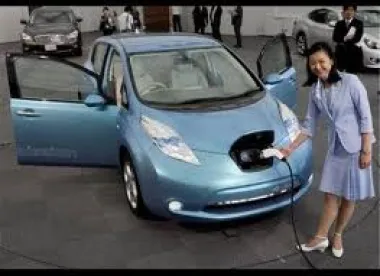Recently, Representative Peter Welch of Vermont introduced legislation restructuring the planned phase out for the current electric vehicle $7500 federal tax credit. As has been discussed in great detail in this blog, the current electric vehicle incentives begin to phase out individually for each manufacturer when that manufacturer delivers its 200,000th electric vehicle. As a policy mechanism, the federal electric vehicle tax incentives positively influence both consumer and automotive manufacturer market behavior. When implemented correctly, consumers will shift toward purchasing eco-friendly electric vehicles and manufacturers will ramp up electric vehicle research and development, ultimately leading to higher production volumes. By combining the benefits to both consumers and manufacturers, these incentives can build a trend toward a growing and ultimately sustainable electric vehicle market devoid of any external incentives.
The aforementioned proposed legislation calls for the abolishment of the 200,000 delivery threshold in the current policy regime, freeing market leaders from what would otherwise be a sudden financial disadvantage to both them and their customers when compared to other electric vehicle sellers and the reintroduction to the financial gap between electric vehicles and their gas-powered counterparts.
While initially intended to award early adopters, in one perspective, the current 200,000 delivery threshold is now a penalty directed to other early adopters in the electric vehicle market. The electric vehicle market is still in its infancy and current buyers are still generally first-time EV owners and should be thought of as early adopters. Under the current tax credit structure, once the 200,000 delivery threshold is crossed, customers of Tesla and GM, which will be the first to hit the phase out, will no longer be eligible for the same tax credit that they could otherwise receive if they purchased a competing electric vehicle. Thus, the phase out punishes the early adopters who are just a little bit too late to the game and forces them away from the EV industry leaders to either less competitive EV models or away from electric vehicles altogether. Instead, an incentive structure that further bolsters the market leaders at this early stage may help promote stronger R&D efforts from the lagging manufacturers than subsidizing substandard market entrants. However, with the current structure, the current electric vehicle tax credit structure penalizes the innovative market leaders and rewards those companies watching from the sidelines.
The proposed legislation does away with the current 200,000 delivery threshold and imposes a broad 10-year limit on the electric vehicle incentive. Additionally, the legislation would change the electric vehicle incentive from a tax credit – what it is currently – to an instant rebate. This way, consumers instantly realize the benefits of the electric vehicle incentive and are not forced to wait until tax time to realize the electric vehicle incentive savings. This move should open up access to electric vehicles to people further down the income ladder who no longer have to float the government the $7500 they are ultimately owed back after tax day. While Tesla expected to cross the 200,000 delivery threshold this quarter, it still has not offered its shorter range $35,000 Model 3 for sale, which promised to bring the Model 3 to price point for the masses. The combination of the entry-level model with its still livable range and the immediate incentive may finally be what is needed to cement EVs as an alternative for the masses, rather than the fringe who are wealthy, drive only locally, or both.
The newly introduced legislative text will become available in the coming days and has already been referred to the House Committee on Ways and Means. Interestingly, the electric vehicle tax credit, which survived an earlier repeal attempt this year, may see the pendulum swing fully in the other direction. One thing to keep an eye on when reading the legislative text is whether the new credit is refundable or if consumers will be required to have at least a $7500 tax liability to take full advantage of the electric vehicle incentive. While the credit acts as a subsidy to the manufacturers, allowing them to sell their vehicles at a higher price than gas-powered equivalents, a refundable tax credit could have even larger impacts on the consumer market. With some quick calculations, a couple filing jointly and taking only the standard deduction would have to earn almost $64,000 to realize the full value of the credit. About 60% of American families fall below this threshold, so shifting the incentive to a refundable credit would newly open access to the credit for tens of millions of new consumers.
As Representative Welch declared, “[w]e are in a race for the winner of the technology for electric vehicles and this credit is going to help spur that.” Keep an eye on the legislation as it passes through the committee process.
Please note Foley Summer Associate, Chris Struble was a contributing author of this post. The Dashboard Insights team thanks him for his contributions.



 />i
/>i

